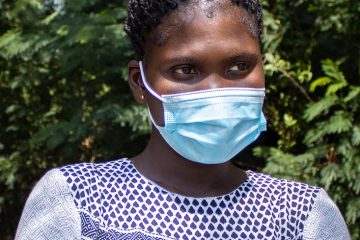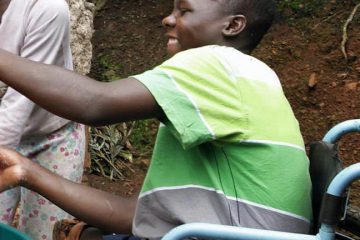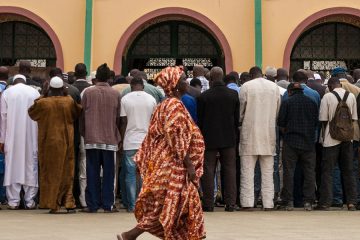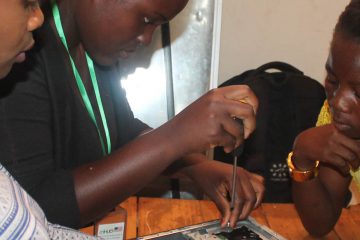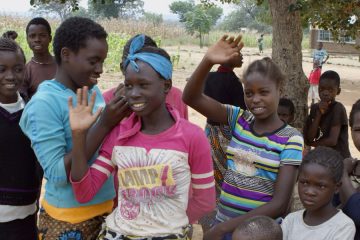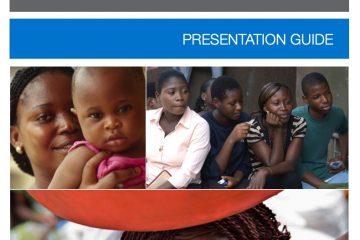ENGAGE presentations captivate global and country leaders with clear messages, reliable data, and stunning visuals, drawing leaders into critical conversations about development in their countries. ENGAGE presentations use innovative technology to offer a new perspective on cross-cutting development issues such as family planning, reproductive health, population growth, the environment, and nutrition, and highlight outcomes across sectors.
Explore individual ENGAGE presentations on our Resources page, and review the topics they cover below.
ENGAGE presentations distill complex research into clear and compelling messages and graphics, enabling leaders at all levels to grasp the evidence base for investment in health as a key development strategy. As a result, ENGAGE presentations are an effective means for advocates at the grassroots, national, and international level to promote policy dialogue about the costs, consequences, and proven solutions to today’s challenges, and achieve a positive impact through greater knowledge, policy changes, and increased funding.
The presentations are available online to stream or download for future use. Presenters can choose to use narrated videos or to deliver ENGAGE presentations live themselves. ENGAGE “Snapshots” can be embedded into other platforms such as PowerPoint. Supplemental presentation materials, including discussion guide and references, are available for each presentation.
Presentation Formats and How They Can Support Your Work
Issue-Focused Presentations
These 15- to 20-minutes presentations highlight a particular health or development issue (for example, family planning, gender, nutrition) that is relevant to a variety of developing country contexts. The issue-focused presentations can be an ideal entry point for discussion with those who may be unfamiliar with a given issue or to approach a familiar topic from a new perspective.
Country-Specific Presentations
Ranging in length from 14 minutes to 30 minutes, the country-specific presentations deliver an in-depth look at national population and cross-cutting topics, with a focus on the role of family planning for health, well-being, and development. They are developed and disseminated in close collaboration with government agencies, local implementing organizations, researchers, experts, and advocates. Country presentations can be used to advocate for change at a national or regional level, with key decisionmakers and other stakeholders.
"ENGAGE Presentations have been instrumental in changing the way leaders, even at the lower level, view family planning...This presentation helped me link poverty and family planning in a way that was simple for the chiefs to understand."
Advocate, , Kenya
Available ENGAGE Presentations
Watch our ENGAGE presentations with PRB’s YouTube playlist.
Available ENGAGE Presentations
Watch our ENGAGE presentations with PRB’s YouTube playlist.
Issue-Focused ENGAGE Presentations
- Building Resilience Through Family Planning and Adaptation Finance Climate change adaptation has come to the forefront of the global agenda after the 2015 Paris Agreement under the United Nations Framework Convention on Climate Change, and momentum for international financing for climate change adaptation projects is growing. This growth provides the family planning/reproductive health (FP/RH) community an opportunity to engage with adaptation decisionmakers and processes to potentially access adaptation funding as part of multisectoral adaptation projects. (March 2018)
- Demographic Dividend and Economic Development Resources PRB’s ENGAGE multimedia products have been viewed by thousands of policymakers in global, national, and local gatherings, including six heads of state. Several ENGAGE products focus on economic development, especially the potential benefits of a demographic dividend. This segment from the ENGAGE presentation “Harnessing the Demographic Dividend” explains the changes necessary for countries to achieve a demographic dividend, and serves as a platform for leaders to discuss investments in youth, FP, education, and the economy.(March 2016)
- Improving Nutrition and Food Security Through Family Planning looks to raise awareness and understanding among decisionmakers about how family planning can help improve key measures of nutrition for mothers, infants, and children, as well as how it can help improve food security at a broader scale. (June 2015)
- Family Planning: The Changing Path of Unmet Need examines reasons why women who say that they want to postpone their next birth, or not have any more children, are not using any form of contraception. (August 2014)
- Population, Health, and Environment Working Together demonstrates the integrated PHE approach to solving challenges in vulnerable and remote communities. (January 2014)
- The Family Planning Ripple Effect: Children Survive and Nations Thrive explains the health benefits of family planning for mothers and children. (November 2013)
- HoPE-LVB seeks to improve individuals’ understanding of HoPE-LVB (Health of People and the Environment in the Lake Victoria Basin) and the population, health, and environment (PHE) approach. (June 2013)
- Harnessing the Demographic Dividend aims to improve understanding of the demographic dividend, what it takes to realize that dividend, and the potential for the countries of sub-Saharan Africa to achieve the demographic dividend and associated economic growth. (May 2013)
- The Time is Now: Invest in Sexual and Reproductive Health for Young People delivers compelling, evidence-based messages about how sexual and reproductive health investments protect the health and well-being of young people and at the same time, advance social and economic development. (July 2012)
- Family Planning and Gender Equality: Partners in Development makes the case that in order to achieve the Millennium Development Goals of reducing poverty by 2015 both family planning and gender equality must be taken into account. Using data and graphics to explain the symbiotic roles of family planning and gender equality in achieving development goals, the objective of this presentation is to reposition family planning as a priority on policy agendas in sub-Saharan Africa. (June 2012)
- Family Planning: Pathway to Poverty Reduction explores the contribution of family planning to economic growth and poverty reduction at the family, community, and national levels, and how to reposition family planning higher on national and local policy agendas in sub-Saharan Africa. (June 2011)
Country-Specific ENGAGE Presentations
- Senegal Engage: Religion and Family Health is an ENGAGE presentation that serves as an advocacy tool to connect reproductive health and family planning issues with faith-based attitudes and beliefs. This presentation was developed by the PACE Project in collaboration with la Direction de la Santé de la Reproduction et de la Survie de l’Enfant at the Ministère de la Santé et de l’Action Sociale and Cadres des Religieux pour la Santé et le Développement who led a task force made up of Senegalese health experts and religious leaders. The ENGAGE presentation and supplemental materials are available in French, Arabic and Wolof. (October 2019)
- Integrating Population, Health, and Environment for Sustainable Development in Kenya an advocacy tool to promote integrated population, health, and environment (PHE) approaches, and the value of family planning/reproductive health (FP/RH) investments by decisionmakers in health and nonhealth sectors, such as natural resource management and conservation. (November 2017)
- Ghana on the Rise: Investing in Population and Development seeks to reposition family planning as a national priority for improving health and well-being, and achieving Ghana’s development goals. (July 2015)
- Connecting Paths: Integrating Reproductive Health and HIV Services in Kenya highlights the links between reproductive health and human immunodeficiency virus (HIV) services as priorities for improving the health and well-being of Kenyans and achieving Kenya’s development goals. (July 2015)
- Malawians Together: Faith, Population, and Development (Amalawi Ogwirizana: Chikhulupiriro, Chiwerengero cha anthu, ndi Chitukuku) aims to align reproductive health issues with faith-based frameworks and beliefs. (March 2015)
- Le Bénin sur le point de décoller: Investir maintenant dans notre avenir explores the impact of rapid population growth at the national and household level in Benin. (January 2015)
- Carrying Malawi Forward: Investing in Sexual and Reproductive Health for Young People seeks to make youth sexual and reproductive health and rights a priority on Malawi’s policy agenda. (October 2014)
- Faith and Families for a Healthier Kenya portrays why family planning is consistent with religious values. (September 2014)
- Kenya’s Key: Investing in Young People aims to reposition reproductive health for young people as a priority for improving health and well-being, and for achieving Kenya’s development goals. (December 2012)
- Malawi: Investing in Our Future Now highlights the advances Malawi has made and the challenges it still faces as it strives to become a middle-income country. Exploring the impact of rapid population growth at the national and the family level, the presentation illustrates the links between rapid population growth, family planning and development. (May 2012)
- Senegal en Marche looks at improvements in family planning use, infant mortality, and other development goals, while highlighting the remaining challenges the country faces. Looking in depth at the consequences of high fertility, unmet need, and unplanned pregnancy for families, communities, and the nation, the presentation also present key recommendations for the way forward. (November 2011)
- Burkina Faso en Marche highlights the progress made and the ongoing challenges Burkina Faso faces in achieving its development goals. The presentation explores the economic and health consequences of the country’s rapid population growth, and highlights the ways in which family planning can support socioeconomic development for families and the country. (May 2011)
- Kenya Leading the Way highlights both the improvements in development indicators over time as well as the disruptions and “stall” in family planning use. Focusing on the high level of unmet need for family planning, it presents the many consequences of unplanned pregnancies, including high-risk births, maternal mortality, and rapid population growth. (June 2011)
- Generations on the Rise in Pakistan highlights improvements in family planning use over time as well as the gaps in implementation. Focusing on the high level of unmet need for family planning, it presents the many costs and consequences of high fertility and unplanned pregnancies. (April 2010)
- Uganda on the Move highlights both the improvements in development indicators over time (the “successes”) as well as the challenges Uganda faces with one of the fastest growing populations in the world. Through Google Earth map, the audience has a birds-eye view of Uganda’s rapidly growing capital city (Kampala) and the impacts of rapid urban growth. (November 2009)


